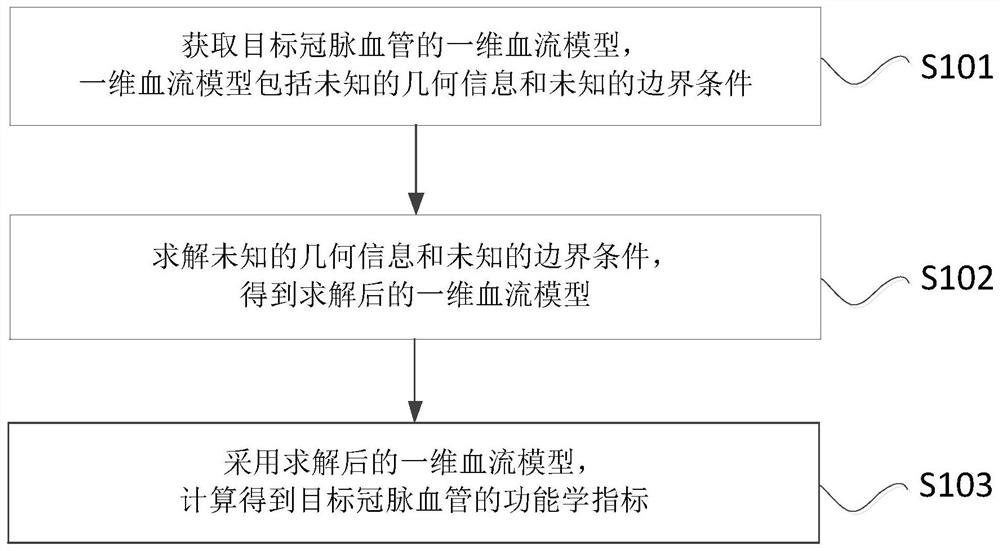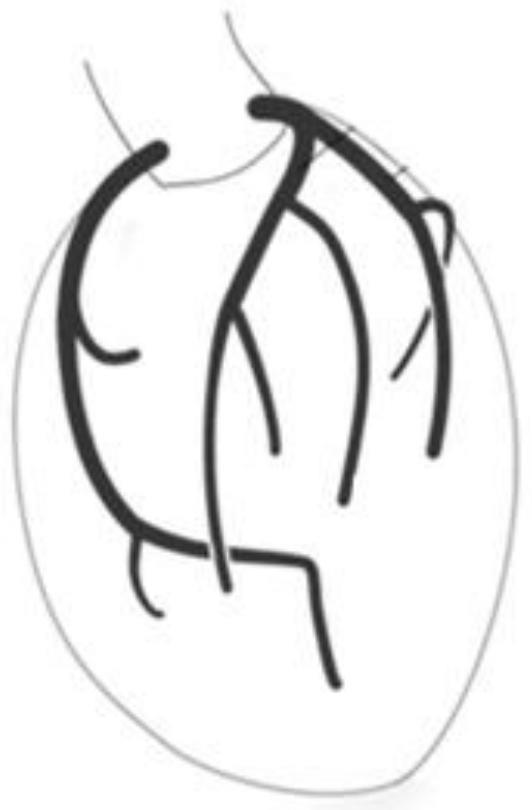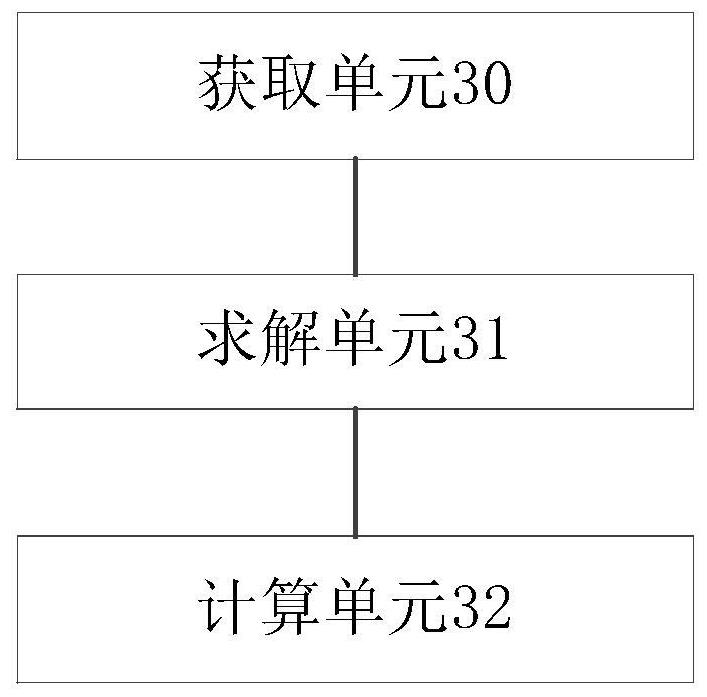Method and device for calculating vascular functional indexes
A functional and vascular technology, applied in the field of hemodynamics, can solve problems such as large amount of calculation and high requirements for computing resources, and achieve the effect of reducing high demand, shortening calculation time, and solving large amount of calculation.
- Summary
- Abstract
- Description
- Claims
- Application Information
AI Technical Summary
Problems solved by technology
Method used
Image
Examples
Embodiment 1
[0103] This embodiment relates to a specific method for calculating the vascular function indicators of the coronary artery tree using a reduced-order model, for example, the Fractional Flow Reserve (FFR) indicator, the main process of which includes: first obtaining geometric information through image data, and then Obtain the geometric features required by the one-dimensional blood flow model based on the geometric information, then identify the topology of the coronary tree based on the geometric features, and then identify the narrow area based on the geometric features, and then use the one-dimensional blood flow model to calculate the outlets of the coronary tree The impedance value in the resting state, and then get the impedance value in the hyperemia state according to the impedance value in the TCRI and the resting state, and then use the one-dimensional blood flow model to calculate the blood flow characteristics of the coronary tree in the hyperemia state, and finall...
Embodiment 2
[0136] This embodiment relates to a specific method for optimizing a virtual stent using a one-dimensional blood flow model, and the specific steps include:
[0137] In step S301, geometric data of blood vessels, for example, a three-dimensional model of blood vessels, is obtained through image processing technology based on the image data, and geometric features, for example, are further extracted from the geometric data. centerline, radius;
[0138] Step S302, obtaining the inlet pressure and flow rate of the coronary artery tree through the basic data and empirical relationship, and using the three-dimensional model to calculate the second flow field data of the whole arterial tree, including flow velocity, pressure, etc.;
[0139] Step S303, according to the position where the virtual stent needs to be placed, intercept an appropriate length, for example, take a blood vessel segment that is three times the length of the stenosis, where the position where the stent needs to...
Embodiment 3
[0147] This embodiment relates to a specific method of using a reduced-order model to calculate a three-dimensional simulation calculation of blood flow in a blood vessel to provide an initial flow field, and the specific steps include:
[0148] Step S401, based on the image data, the geometric information of the blood vessel is obtained through image processing technology, including data such as the centerline, the name of the centerline, and the radius distributed along the centerline;
[0149] Step S402, select two centerlines, traverse from the exit position to calculate the distance d between the two centerline points, if d<0.5mm, then consider this position to be the bifurcation point of the two centerlines;
[0150] Step S403, repeating step S402, traversing all centerlines, and obtaining the positions of all bifurcation points;
[0151] Step S404, traversing each centerline, using the centerline between two bifurcation points as a section of blood vessel, so as to obta...
PUM
 Login to View More
Login to View More Abstract
Description
Claims
Application Information
 Login to View More
Login to View More - R&D
- Intellectual Property
- Life Sciences
- Materials
- Tech Scout
- Unparalleled Data Quality
- Higher Quality Content
- 60% Fewer Hallucinations
Browse by: Latest US Patents, China's latest patents, Technical Efficacy Thesaurus, Application Domain, Technology Topic, Popular Technical Reports.
© 2025 PatSnap. All rights reserved.Legal|Privacy policy|Modern Slavery Act Transparency Statement|Sitemap|About US| Contact US: help@patsnap.com



